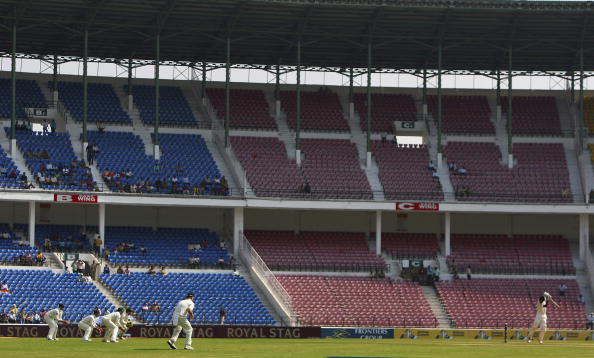Why Test matches at smaller centres is a good move by the BCCI
When world cricket in the mid-2000s started dancing to the tunes of the T20 format, a genuine question was repeatedly asked. Can good old Test cricket survive in the same world, with the growing popularity of its younger fellas?

The same question was asked back in the 70s too, after the birth of the One-day format. However, time has put every speculation to rest as both formats of the game continued to thrive under the same roof. But with T20 cricket being an instant success by throwing results in just about three hours of time, the alacrity of the people to watch Test matches in big cities has gone down considerably.
Every sport is fan-centric. the fans determine the fate of the sport and its popularity being directly proportional to its following. But unfortunately, in recent times, the Indian Test cricketing centres have failed to attract crowds for the oldest format of the game. While in countries like England and Australia, people still come in thousands to watch even their domestic matches from the ground. And this lack of interest for red-ball cricket in the subcontinent has become a topic for an intensive case study.
There are generally two views regarding the allocation of venues for Test cricket. While one school of thought implies that Test matches be given to the venues which have a cricketing culture and where people understand the importance of Test cricket, the other view suggests that matches be given to the new venues where people are craving to watch cricket matches live from the ground. The first view has been tried and tested with no positive results coming out of it; thus the door has now opened for the second idea.
The third Test match of the India-New Zealand series at the Holkar Stadium in Indore broke any doubts whatsoever regarding the attendance for the entire match. It was the first Test at that venue and the excitement with which people thronged the stands, even on the practice days, created a massive hope of reviving the interest in Test cricket.

 © Getty
© GettyAt the Holkar stadium, the atmosphere was quite electrifying. Although the humidity levels were high during the Test match, it didn’t deter the drive and enthusiasm of the crowd. With unbridled passion, they cheered for Team India and with captain popular, Virat Kohli playing to the theatrics (He did that at the Eden Gardens too by geeing up the crowds while standing at the boundary), the crowd had to reciprocate. They appealed with the bowlers and took selfies with the match in the background. The experiment by the BCCI to host Test matches in smaller centres to cater to the mad cricket-loving crowd was seen as an instant success there. Like Indore, when small cities like Rajkot, Vizag, Pune and Ranchi will host Test matches in this long home season, expect a full house for all the games.
Centres like Ahmedabad, Mohali, Nagpur and even Delhi have failed to attract even a thousand people to watch a Test match. Sachin Tendulkar broke Brian Lara’s record of the most Test runs in front of empty stands at Mohali back in 2008.

 © Getty
© GettyAt the same time, the smaller venues play host to a great viewing experience when an international cricketer takes the field in a Ranji Trophy encounter. Take the example of a game in the last year's Ranji Trophy between Odisha and Delhi in Bhubaneswar. People came in thousands to throng the stands to watch Gautam Gambhir in action. This could easily be replicated in the Test matches as well.
The arguments used in favour of the big venues like good infrastructure, easy travel from the airport and premium hotel facility do not have any point now considering all the cities have progressed both socially and economically in the last few years.
The fact that India has not taken proper care of Test cricket has also attributed to the dwindling popularity of the format. In Australia, the Boxing Day Test and the New Year Test is a celebration of sorts. People wait for that and cheer their team with full capacity. But does India have the same kind of annual events to mark any occasion? The genuine lack of interest for the format is somehow responsible for the downfall of it.
For reference, an MCC survey in 2009 regarding the viewership of Test cricket showed that only 7 % of Indians preferred to watch Test cricket over the other two formats. However, seven years later, it has seen a further decrease in average attendances for Tests.
Keeping everything aside and coming to the point of how cricket has transformed Indian economy, the answer might come in unison that it touched the grassroots in India, unlike other sports. Ours is a country where from a child to an adult, from a Panwalla to an officer, everyone loves to watch cricket. And when it comes to showcasing the love for the game on a global forum, the empty stands at the big centres fail to paint the right image.
Saying the small cities don’t have the cricketing culture is a bit of an aberration. The cities like Indore, Kanpur and Rajkot have had a long tradition of producing international cricketers from the state. While BCCI has presented Test status to these venues in a bid to reach out to more people, this may be the initiation of a new dawn in Indian Test cricket.

Comments
Sign up or log in to your account to leave comments and reactions
0 Comments